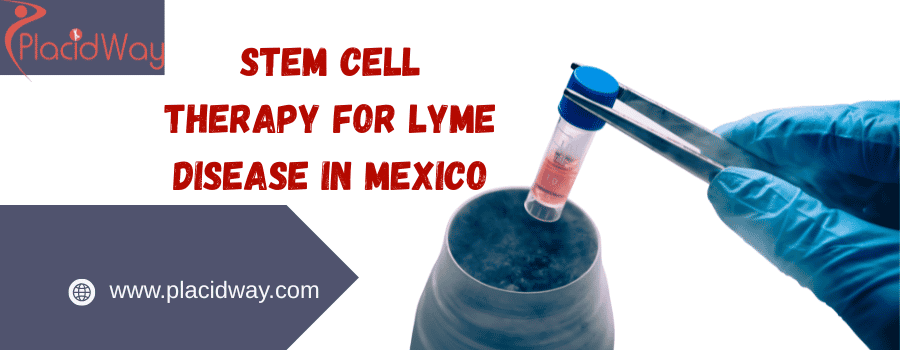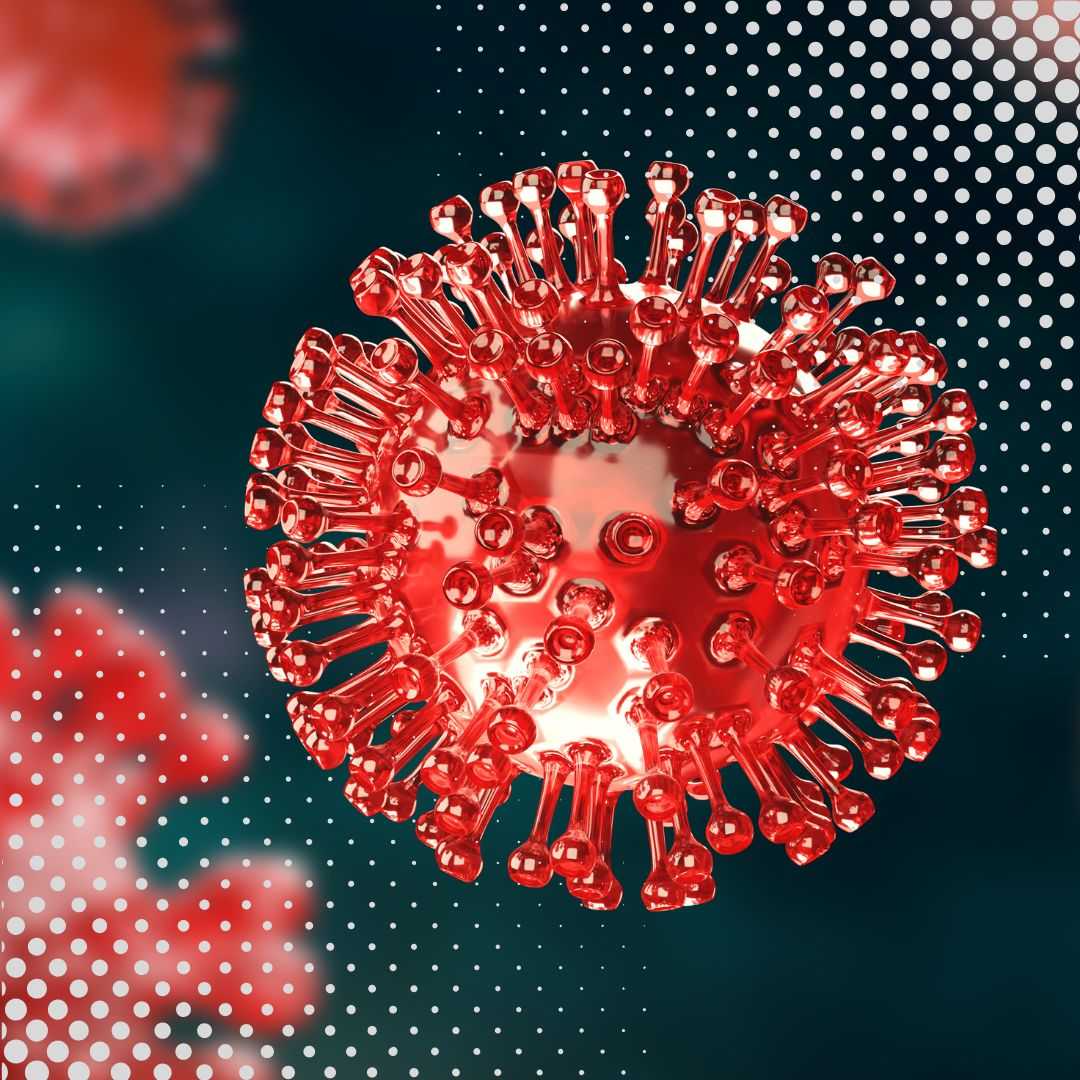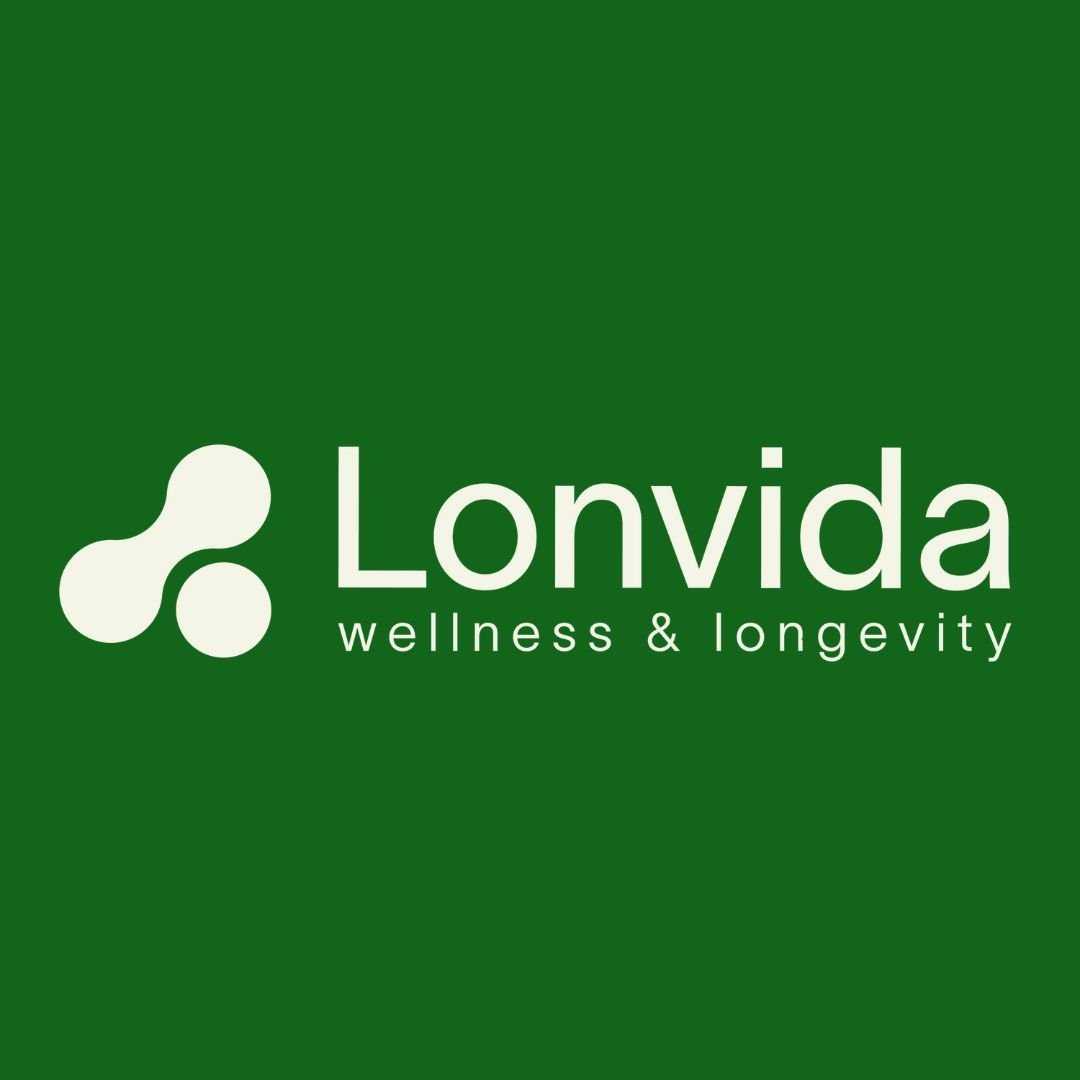Affordable Stem Cell Treatment for Lyme Disease in Mexico

Lyme Disease is a complex, tick-borne illness caused by the bacterium Borrelia burgdorferi. If left untreated or inadequately treated, it can lead to chronic and debilitating symptoms affecting multiple body systems, including the joints, nervous system, and heart. For individuals suffering from chronic Lyme disease, traditional antibiotic treatments may not fully resolve symptoms, leading many to explore alternative and investigational therapies like stem cell treatment for Lyme Disease.
Mexico has emerged as a prominent destination for patients seeking these advanced, often investigational, treatments due to its more accessible regulatory environment for regenerative therapies and significantly more affordable pricing compared to countries like the United States.
What is the cost of stem cell therapy for Lyme disease in Mexico?
"The cost of stem cell therapy for Lyme disease in Mexico typically ranges from $4,900 to $16,000 USD per treatment session. This price varies based on the specific clinic, the type and quantity of stem cells used, the administration method, and whether it's part of a broader, more comprehensive treatment protocol that may include supportive therapies.
For example, as of June 2025, some clinics in Mexico (including those in Tijuana, Cancun, and Puerto Vallarta) offer entry-level packages starting around $4,900 for 35-50 million stem cells (often umbilical cord-derived Mesenchymal Stem Cells administered intravenously). More extensive protocols, involving higher cell doses (e.g., 100-250 million cells), multiple administration routes (e.g., IV plus localized injections), or additional supportive therapies like exosomes, ozone treatments, or IV vitamin drips, can range from $8,850 to $16,000 USD or potentially more. These prices represent a substantial saving compared to the United States, where similar investigational treatments, if available, could cost upwards of $20,000 to $50,000+ per session.
What are the typical costs for a single session of stem cell therapy for Lyme disease in Mexico?
"The typical costs for a single session of stem cell therapy for Lyme disease in Mexico generally fall between $4,900 and $16,000 USD, with pricing influenced by the specific type and concentration of stem cells, and the complexity of the treatment protocol."
The cost of stem cell therapy for Lyme disease in Mexico reflects the individualized nature of these advanced treatments. Here's a general breakdown, accurate as of June 2025:
- Entry-Level Protocols (e.g., Standard IV administration): You might find treatments starting from $4,900 to $7,000 USD. These usually involve a defined number of Mesenchymal Stem Cells (MSCs), often 35-50 million, administered intravenously. This is often a starting point for patients seeking general immune modulation and anti-inflammatory effects.
- Intermediate Protocols (e.g., Higher cell count or additional IVs): As the number of stem cells administered increases (e.g., 75-100 million), or if the treatment involves multiple IV infusions or additional components like exosomes, the price can increase to $7,250 to $8,850 USD. These higher doses or combinations may be recommended for patients with more severe or chronic Lyme symptoms.
- Comprehensive Protocols (e.g., Very high cell count, multiple routes, or combined therapies): The higher end of the spectrum, from $8,850 to $16,100 USD (or up to $18,975 for 250 million cells), typically includes a very high number of stem cells (e.g., 100 million to 250 million), potentially multiple routes of administration (e.g., IV plus localized injections into affected joints or muscles), or may incorporate additional supportive therapies like ozone treatments, PRP, or specialized IV drips. These protocols are often tailored for patients with complex, multi-systemic chronic Lyme disease.
The exact cost will always be determined after a thorough medical evaluation by the clinic's specialists, who will then design a personalized treatment plan.
Why is stem cell therapy for Lyme disease more affordable in Mexico?
"Stem cell therapy for Lyme disease is more affordable in Mexico primarily due to lower operational costs for specialized clinics, reduced labor wages for medical professionals, and a more accessible regulatory environment for regenerative therapies compared to the United States, enabling significant savings for patients."
The considerable price advantage of seeking stem cell therapy for Lyme disease in Mexico (often saving 50% to 70% compared to equivalent investigational treatments in the US) is a major draw. This affordability is rooted in Mexico's economic landscape, not a compromise on the quality of cells or medical expertise at reputable clinics. As of June 2025, these factors continue to drive medical tourism to Mexico:
- Lower Overhead Costs: The operational expenses for medical facilities, including rent for clinics, utilities, medical supplies, and general administrative costs, are considerably lower in Mexico compared to the US.
- Reduced Labor Wages: While Mexican medical specialists, including infectious disease specialists, neurologists, stem cell therapists, nurses, and lab technicians, are highly trained and experienced, their salaries are significantly lower than what their counterparts in North America would command. This significantly reduces the overall cost of providing the therapy.
- Regulatory Framework: Mexico's regulatory landscape for stem cell therapies, overseen by COFEPRIS (Mexico's equivalent of the FDA), generally allows for broader and more accessible applications of regenerative treatments than in the US. In the US, many stem cell therapies for complex conditions like chronic Lyme are still considered investigational by the FDA and can only be accessed through costly clinical trials or under specific, limited exemptions. This regulatory difference reduces development and operational costs for clinics.
- Favorable Exchange Rates: The strong purchasing power of the US dollar against the Mexican Peso further amplifies the affordability for American patients.
- Competitive Medical Tourism Market: Mexico has a robust and competitive medical tourism sector, fostering competition among specialized clinics and encouraging them to offer attractive pricing for advanced therapies.
These combined factors enable reputable Mexican clinics to provide cutting-edge stem cell therapy for Lyme disease at a fraction of the cost seen elsewhere.
What types of stem cells are used for Lyme disease treatment in Mexico?
"For Lyme disease treatment in Mexico, clinics primarily utilize Mesenchymal Stem Cells (MSCs), most commonly derived from umbilical cord tissue (Wharton's Jelly), but also from adipose (fat) tissue or bone marrow, chosen for their immunomodulatory, anti-inflammatory, and regenerative properties."
MSCs are the most prevalent type of stem cell employed in regenerative medicine for complex, multi-systemic conditions like Lyme disease. They exert their therapeutic effects through several mechanisms relevant to Lyme's chronic inflammation and tissue damage:
- Immunomodulation: MSCs can modulate an overactive or dysregulated immune system, which is crucial in chronic Lyme disease where persistent inflammation and immune responses contribute to symptoms. They can reduce inflammation and help balance the immune response.
- Anti-inflammation: They possess powerful anti-inflammatory properties that can directly reduce inflammation in affected joints, nerves, and tissues, alleviating pain and swelling.
- Tissue Repair and Neuroprotection: MSCs can secrete growth factors and other molecules that promote the repair of damaged tissues (e.g., nerves, joints, muscles) and help protect existing cells from further damage. This is particularly relevant for neurological and musculoskeletal symptoms of Lyme.
- Angiogenesis: They can promote the formation of new blood vessels, potentially improving blood supply to damaged or poorly perfused areas.
Common sources for MSCs in Mexico, as of June 2025, include:
- Umbilical Cord Tissue-Derived MSCs (UC-MSCs): These are "allogeneic" (donor-derived) and are a preferred source due to their abundance of young, potent, and ethically sourced cells. They are considered "immune-privileged," making them less likely to provoke an immune response in the recipient, and are readily available from licensed laboratories.
- Adipose-Derived Stem Cells (ADSCs): These are usually "autologous" (derived from the patient's own fat tissue) or, less commonly, allogeneic. They are harvested via liposuction, processed, and then re-administered, often into affected joints or intravenously.
- Bone Marrow-Derived Stem Cells (BMSCs): Also autologous, harvested directly from the patient's bone marrow. While effective, harvesting is more invasive, and the cell yield and potency can decrease with the patient's age.
The specific type, source, and quantity of MSCs used will be determined by the clinic's protocol and the patient's individual condition and needs.
What is typically included in the price of stem cell therapy packages for Lyme disease in Mexico?
"The price of stem cell therapy packages for Lyme disease in Mexico typically includes the initial medical consultation, the cost of stem cells (sourcing and processing), administration of cells (e.g., IV, localized injections), and immediate post-treatment monitoring, with many clinics offering additional supportive therapies or basic logistics."
When considering stem cell treatment for Lyme disease in Mexico, it's crucial to obtain a detailed, itemized quote to understand exactly what your quoted price covers. Reputable clinics strive for transparency in their comprehensive packages:
- Medical Consultation: This involves a thorough review of your medical history, diagnostic tests (e.g., Western blot, PCR, co-infection testing), current Lyme symptoms, and a medical evaluation to assess your suitability and create a personalized treatment plan. This may include remote initial consultations.
- Stem Cell Sourcing and Preparation: The cost associated with acquiring the specific type and quantity of stem cells (e.g., from a certified umbilical cord bank) and the sophisticated laboratory procedures to process, culture, and prepare them for administration, ensuring cell viability and purity.
- Administration of Cells: The cost associated with the chosen delivery method, whether it's intravenous (IV) infusion for systemic effects, localized injections into affected joints or muscles, or other routes (e.g., nebulizer, intranasal for neurological symptoms).
- Immediate Post-Treatment Monitoring: Short-term observation and care after the procedure to monitor for any immediate adverse reactions.
- Medical Team Fees: Fees for the specialized doctors, nurses, and technicians involved in your treatment.
- Initial Medications: Pain relief or anti-inflammatory medications administered during the treatment process.
- Logistical Support (Varies by clinic): Some comprehensive packages may include ground transportation from the airport to the clinic/hotel, and sometimes limited accommodation.
What is often not included in the base price and should be budgeted separately:
- Extensive Pre-treatment Diagnostics: While some basic labs might be included, specialized Lyme testing, co-infection testing, or extensive imaging (e.g., brain MRI, SPECT scans) might be extra if not already completed.
- Additional Therapies: Complementary treatments like exosomes, Platelet-Rich Plasma (PRP), ozone treatments, IV vitamin drips, peptide therapies, or hyperbaric oxygen therapy (HBOT) are often offered as add-ons to enhance outcomes.
- Multiple Sessions: For chronic Lyme, protocols often recommend multiple sessions over time (e.g., annually, or a series over a few weeks/months) for potential cumulative or sustained benefits. Each additional session will typically be a separate cost.
- Travel and Accommodation: Unless explicitly stated in a premium package, flights, hotel stays, local transportation beyond clinic transfers, and meals are separate expenses.
- Long-term Follow-up: While immediate post-treatment contact is usually provided, long-term monitoring by the clinic or your local Lyme-literate doctor is typically not included.
Always request an itemized quote to ensure full transparency and avoid any unexpected expenses.
What factors influence the total cost of stem cell therapy for Lyme disease in Mexico?
"The total cost of stem cell therapy for Lyme disease in Mexico is primarily influenced by the type and quantity (number of cells) of stem cells used, the administration method, the number of treatment sessions, the severity and chronicity of Lyme symptoms, the clinic's reputation, and any complementary therapies included in the protocol."
The personalized nature of stem cell therapy means that the final cost can vary significantly. Key factors impacting the price include:
- Stem Cell Type and Quantity: Umbilical cord-derived MSCs are often preferred and may have a different cost structure due to their sourcing from licensed banks. Higher cell counts (e.g., 100 million, 200 million+ cells per dose) are typically associated with higher costs, as they involve more complex lab work and sourcing. Autologous cells involve a harvesting procedure, which adds to the cost.
- Administration Method: Intravenous (IV) infusions are a common systemic delivery method. Localized injections (e.g., into affected joints or muscles) will add to the cost, as will more specialized routes like intrathecal (spinal fluid) injections if used for neurological Lyme.
- Number of Treatment Sessions: For chronic Lyme disease, protocols often recommend multiple sessions over time (e.g., annually, or a series over a few weeks/months) for potential cumulative or sustained benefits. Each additional session will increase the overall cost.
- Severity and Chronicity of Lyme: Patients with more severe, multi-systemic, or long-standing chronic Lyme disease may require higher cell doses or more complex protocols, influencing the cost.
- Clinic Reputation and Specialization: Highly renowned clinics with advanced research capabilities, state-of-the-art facilities, and leading specialists in regenerative medicine for chronic infectious or autoimmune conditions will likely charge more for their expertise and infrastructure.
- Complementary Therapies: Packages that integrate additional treatments like exosomes, ozone therapy, PRP, IV nutrition, or specialized peptides will add to the total cost. These are often considered crucial for creating an optimal healing environment for complex conditions like Lyme.
- Pre- and Post-Treatment Diagnostics: Comprehensive Lyme testing, co-infection screening, or advanced imaging (e.g., brain MRI) might be an additional cost if not specifically bundled.
A detailed discussion with the clinic about your specific Lyme presentation and their recommended protocol is essential to get an accurate cost estimate.
What is the typical success rate for stem cell therapy for Lyme disease in Mexico?
"The typical success rate for stem cell therapy for Lyme disease in Mexico is not yet definitively established as it's still largely considered investigational, but anecdotal reports and preliminary studies from specialized clinics suggest positive outcomes, with some centers reporting up to 95% success in improving symptoms and potentially preventing disease progression, varying by patient and severity."
As of June 2025, stem cell therapy for Lyme disease is not a universally recognized cure or standard treatment protocol, and its long-term efficacy is still being researched globally. Therefore, "success rate" should be viewed cautiously:
- Investigational Status: Most major regulatory bodies (like the FDA in the US) classify this treatment as investigational. This means while clinics in Mexico can offer it, there isn't large-scale, placebo-controlled clinical trial data to provide definitive success rates comparable to approved treatments.
- Varied Outcomes: Reported improvements are often from smaller studies or clinic-specific data, showing variations based on the individual's age, severity and duration of Lyme, specific type and dose of stem cells used, and accompanying therapies. Some clinics report high patient satisfaction and symptomatic improvement.
- Reported Benefits: Patients and clinics often report benefits such as:
- Significant reduction in inflammation and pain (joint, muscle, neurological).
- Improved energy levels and reduced fatigue.
- Better cognitive function (e.g., "brain fog" reduction).
- Improved neurological symptoms (e.g., tremors, numbness).
- Enhanced immune system function.
- Improved overall quality of life.
- No Cure Guaranteed: It is crucial to understand that stem cell therapy for Lyme disease is not a guaranteed cure for the infection itself, but rather aims to address the chronic inflammation, tissue damage, and immune dysfunction associated with the disease. It does not replace the need for appropriate antibiotic treatment for active infection.
Reputable clinics will provide realistic expectations, discuss potential benefits versus risks, and transparently share any internal outcome data they have, while emphasizing the investigational nature of the treatment.
Is stem cell therapy for Lyme disease covered by insurance in Mexico or my home country?
"No, stem cell therapy for Lyme disease is generally not covered by standard health insurance in Mexico, the United States, Canada, or most other countries, as it is primarily considered an experimental or investigational therapy by major regulatory bodies."
As of June 2025, patients considering stem cell therapy for Lyme disease in Mexico should anticipate paying the full cost out-of-pocket. Here's why insurance typically doesn't provide coverage:
- Investigational Status: Most insurance companies adhere to the guidelines of regulatory bodies which classify these treatments as investigational. Until they receive full approval as standard medical practice for Lyme disease with extensive, long-term efficacy and safety data, insurance coverage is highly unlikely.
- Lack of Definitive Clinical Trial Data: Insurers typically require robust, large-scale, peer-reviewed clinical trial data demonstrating clear long-term efficacy and safety for specific indications before they will cover a treatment. This data is still being gathered for stem cell therapy in Lyme disease.
- Off-Label Use: Even if stem cells are approved for certain orthopedic or hematological conditions, their use for complex chronic infectious/autoimmune conditions like Lyme is considered "off-label" and therefore not covered.
- Elective Nature: From an insurance perspective, many experimental treatments are deemed elective or non-essential, falling outside of standard medical necessity coverage.
- Out-of-Network/Out-of-Country: Even if a plan had some experimental coverage, it would likely not extend to treatment obtained in a foreign country or from providers not in their network.
While Flexible Spending Accounts (FSAs) or Health Savings Accounts (HSAs) in the US might be used for these expenses, it's crucial for patients to confirm eligibility with their plan administrator directly.
How to find a reputable clinic for stem cell therapy for Lyme disease in Mexico?
"To find a reputable clinic for stem cell therapy for Lyme disease in Mexico, prioritize clinics with board-certified doctors specializing in infectious disease or regenerative medicine, transparent pricing, verifiable cell quality and sourcing, strong patient testimonials, and clear communication regarding treatment protocols and realistic expectations."
Choosing a reputable clinic is paramount for safety and potential efficacy when dealing with a complex condition like Lyme disease. Here's a checklist for thorough vetting:
- Medical Team Credentials: Ensure the doctors overseeing and administering the treatment are board-certified in relevant specialties (e.g., Infectious Disease, Neurology, Regenerative Medicine) and have specific experience with stem cell applications for chronic inflammatory or autoimmune conditions.
- Transparency in Stem Cell Sourcing and Processing: This is critically important. Ask about the source of their stem cells (e.g., accredited umbilical cord tissue banks, in-house adipose/bone marrow processing labs), how they are processed, and if they provide Certificates of Analysis (COAs) for cell count, viability, and purity for each batch.
- Clinic Licensing and Accreditations: Verify that the clinic is fully licensed by the Mexican Ministry of Health (COFEPRIS). While international accreditation (like JCI) is less common for specialized stem cell clinics, it's a strong indicator of quality if present.
- Detailed Treatment Protocols: The clinic should provide a clear, individualized treatment plan based on your specific Lyme presentation, symptoms, and disease activity, explaining the rationale, dosage, administration routes, expected outcomes (realistic), and potential risks.
- Realistic Expectations: Be wary of clinics that make exaggerated claims or promise "cures" for Lyme disease. Reputable clinics will emphasize the investigational nature of the treatment and manage expectations responsibly, focusing on symptom management, immunomodulation, and tissue repair.
- Patient Testimonials and Reviews: Look for consistent positive feedback on independent platforms. Inquire if they can connect you with past patients (while respecting privacy).
- Communication: Ensure staff are multilingual and provide clear, prompt, and empathetic communication.
- Facility Standards: Ask for photos or virtual tours of their lab (if they process in-house) and treatment facilities to assess cleanliness and professionalism.
- Emergency Protocols: Inquire about their emergency preparedness and access to hospital facilities if needed.
- Integration with Traditional Care: A reputable clinic will encourage you to continue working with your local Lyme-literate doctor and to not abandon conventional treatments (e.g., antibiotics, if prescribed for active infection).
Thorough research, direct communication, and a healthy dose of skepticism are key to making a safe and informed decision about stem cell therapy for Lyme disease in Mexico.
Ready to explore potential innovative therapies for managing Lyme disease? Visit PlacidWay to discover world-class medical tourism options and connect with trusted providers offering high-quality, affordable stem cell treatment for Lyme disease in Mexico.


.png)





.jpg)
.png)







Share this listing